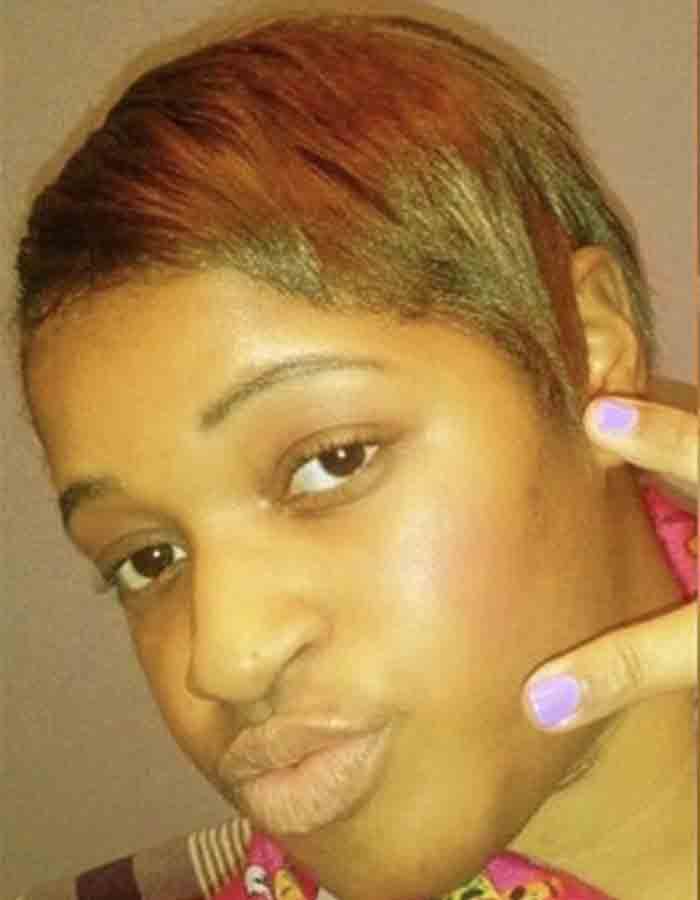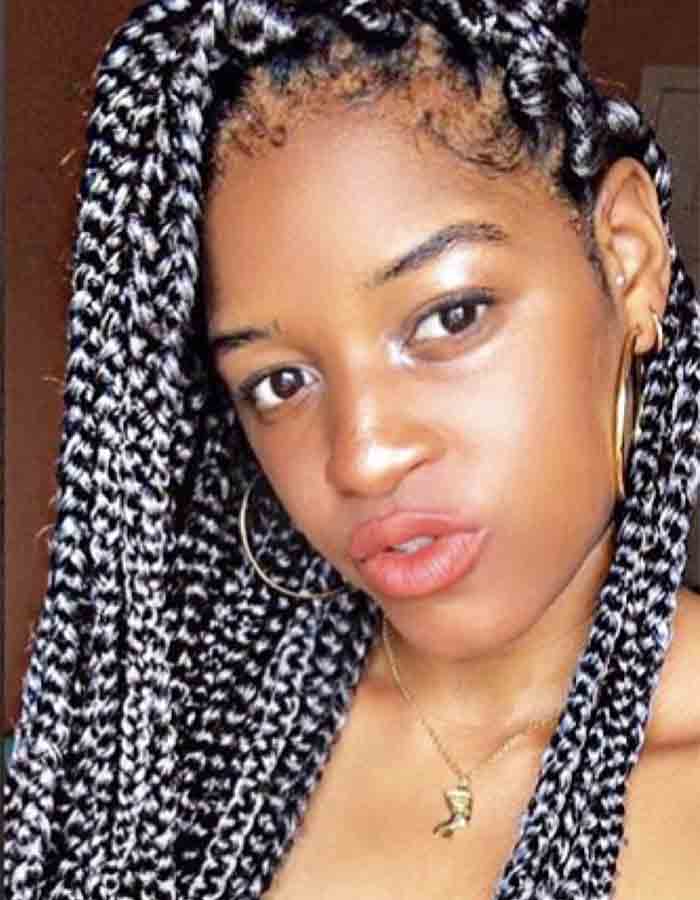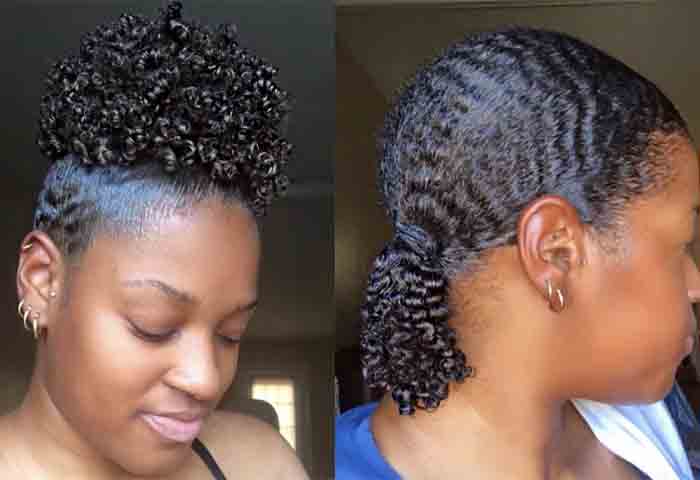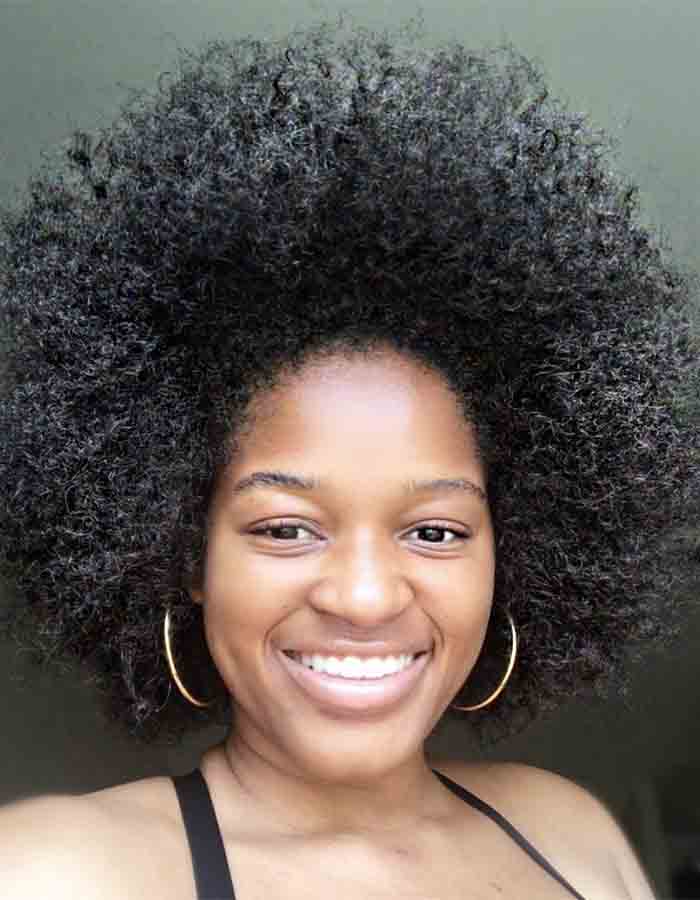
Image:@shaneengedi
What was it like for you growing up with textured hair?
Growing up with textured hair in the early 2000s didn’t seem bad because society’s standard for “beautiful” hair was naturally wavy or curly hair— but, in retrospect today… it was VERY hard for me to fully accept my textured hair and love myself. With that, I’d play both sides of the fence by having 4a hair because I would put chemicals in my hair to soften my coils to a 3a curlier texture. Also, going to a predominantly white school heavily influenced me texturizing my hair to blend in with my synthetic, curly (3a-3b”> pony tail. So, growing up with textured hair didn’t seem so bad until now when I realize how badly damaged my hair was from the texturizers and flat iron; plus, how irritated my scalp was when my eczema flared up. Simply loving myself would have saved me from my many dermatologist visits in my adolescence years.
What made you decide to embrace your naturally curly hair?
Hmm, paraphrasing the word “embrace” means to accept something. I’m mentioning this because I’ve always accepted my naturally coily hair since my mom last permed it in 2002. So, no major “circumstance” suddenly made me embrace my hair. Since age 11, I’ve been given the autonomy to care for my hair without relaxing it—rather I’d damage it by burning it out with the flat iron. My favorite hairstyle for school was my low, puffy, ponytail. However, during my high school years I’d texturize my hair (sporadically”> to soften my coils to blend in with my synthetic, curly ponytail— but, I still accepted my natural texture. In context, I will say that I begin to “fully” and “outwardly” embrace my natural coily hair after I was given a platform to influence others since 2017. Lastly, I became more eager to show off my natural hair after I saw real results.

Image:@shaneengedi
What has been the most empowering moment of your natural hair journey so far?
My most empowering moment of my 2nd natural hair journey was when all my hair fell out the night before my high school graduation—yes, I was bald as a Sphynx cat— one word “TRAGIC”. My hair simply fell out due to a bad chemical reaction to my poorly bleached hair during high school. I don’t recall what hairstyle I wanted for graduation, but I obviously wanted it relaxed for the first time since 2002. I was unaware that bleached hair and relaxers don’t mix well. When paraphrasing the word “empower” which means “making something stronger or confident”— I was mostly empowered when I was forced to love myself while I was bald headed and had to wear wigs for years. Experiences like such, was a focal point in me learning about protective styles like quick weaves; and transitioned my thinking to “fully” embrace my natural hair without bleaching or texturizing it.
How do you protect your curls at night?
Every “natural hair guru” says the only way to protect your curls or coils at night should be done by using a satin bonnet, headscarf or sleeping on a silk pillowcase—and, pray the bonnet stays on your head overnight. But, in my imperfect world… my bonnets never stay on my head overnight, so I don’t use them ever. Rather, I’d just improvise by sleeping on a pillow (not silk”> that doesn’t cause split ends or dry out my hair. Honestly, I haven’t created a “good” way to protect my curls at night; mainly because I feel my consistent, nightly scalp massages (sometimes with JBCO”> does enough to stimulate growth. Plus, I would apply hair moisturizer mixed with water, when necessary, to prevent my hair from drying out and breaking off. So, my suggestion has always been “do what works best for your hair”—with good results, of course.

Image:@shaneengedi
Who is your curl crush?
Curl crush… well, I don’t have any curl crushes mainly because I don’t watch hair tutorial videos by influencers or youtubers to “admire or crush” on their hair. Also, my hair results never turn out like the results on the videos so to prevent myself from becoming discouraged in my own hair journey… I focus on my own hair care routines that works best for my hair. With that, I purposely shy away from hair pages that “exalts” the latest hair styles, trends, and hair “inspirations” to remain authentic and creative as a content creator using my platform. However, I have come across three hair influencers that I admire for embracing their natural hair and using their platforms to help others. My fav 3c-4a hair naturalista is @365daysofnaturalhair; my fav 4b natural influencer/blogger is @fari_ivy; and lastly, my fav 4c natural hair enthusiast is @thefrotales.
What’s your curly girl essential you can’t live without?
Since Fall 2018, I’ve stayed consistent in using pure, organic products in my haircare routine that’s really grown and thicken my hair—my coily pattern has flourished. I regularly use PURE Jamaican black castor oil by Rooted Treasure for moisture and strength– it’s pure, organic oil made in Jamaica. The main benefits I’ve noticed using this oil are less shielding and breakage, plus more shine and moisture. Finding an effective oil for my low porosity type 4 hair has been challenging because my hair would become dry and brittle after a long washday. However, using JBCO regularly as a moisturizer and strengthener has been advantageous. Lastly, my washday essentials are Moisture Silk shampoo and Leave-Me-Be conditioner by BournBeautiful Naturals. This shampoo super hydrates and cleanses my hair so that detangling is barely needed— it smells amazing! Also, this leave-in conditioner is my daily, go-to product when my coils need to be hydrated after a long work week—its conveniently lightweight to prevent build-up.

Image:@shaneengedi
What is your current hair regimen? Any favorite products you’d like to share?
My hair care regimen I “consistently” practice to keep my hair healthy are scalp massaging nightly, moisturizing daily, and hydrating weekly. At first, I would literally put any product in my hair and tug on my ends with no regards and wondered why I saw no results. Then I start treating my hair like a “baby” that needs constant attention and nurture to grow and stay healthy— your hair must be properly cared for to be healthy. With that, I use my scalp massager by @rootedtreasure to massage their JBCO into my hair sometimes, and use my hands to spread my hair moisturizer all over my hair; then detangle my ends with Denman brush . Also, I moisturize my hair in the morning while styling my hair for work to prevent dryness throughout the day. Lastly, I hydrate my hair weekly with MOSTLY water and Miracle Curl Plumper by DevaCurl .
What has been the most challenging moment of your natural hair journey so far?
Keeping my hair moisturized and hydrated was my biggest hair challenge of my 2nd hair journey since 2010. For years, I was very annoyed with my textured hair because I didn’t understand why it would be so dry and brittle after a long washday— which made styling very complicated. That’s when I started to do my own research for months on the many benefits of using organic, pure products, then verified their ingredients for its authenticity. Also, learning how to properly care for my low porosity hair was my second challenge. So, understanding my hair porosity helped me realize what products worked best for my hair so I could minimize dryness and breakage. Again, with research I learned that low porosity hair experiences major buildup and can easily be damaged if its conditioned too much because of protein—which made the “rice water challenge” trend a negative.
Are there any techniques or methods that have made a huge impact on your hair health?
When moisturizing my hair, I section my hair in two parts down the middle of my head to make detangling easier. I found that sectioning my hair saves more time than I thought and allows me to evenly disperse products throughout my hair and to my scalp. I’ve noticed that the more I section my hair to touch my roots, the more detangled my hair stays over a longer period even after its washed— especially when it’s parted at the natural part lines. My go-to detangling brush is denman brush which minimized a lot of breakage. I mostly use this brush during hydration to texturize or manipulate my curls. I’ve noticed that sectioning my hair prevents the middle of my hair that is not exposed to product as much from becoming overly dry and brittle. Other methods I use is LOC method when “hydrating” my hair—more water, less product.
What’s your advice to women who are still struggling with loving their natural texture?
Find confidence in the one who created you, and I identify my creator as God—some may say the Universe, or Allah. It’s inevitable for women as emotional beings to completely stop struggling to love their textured hair because its changes overtime. However, I found that placing my confidence in “The Creator” who created my hair “just for me” overcomes every mental battle.
What’s your hair story? Share your journey with us here to be featured in our Texture Tales series.
